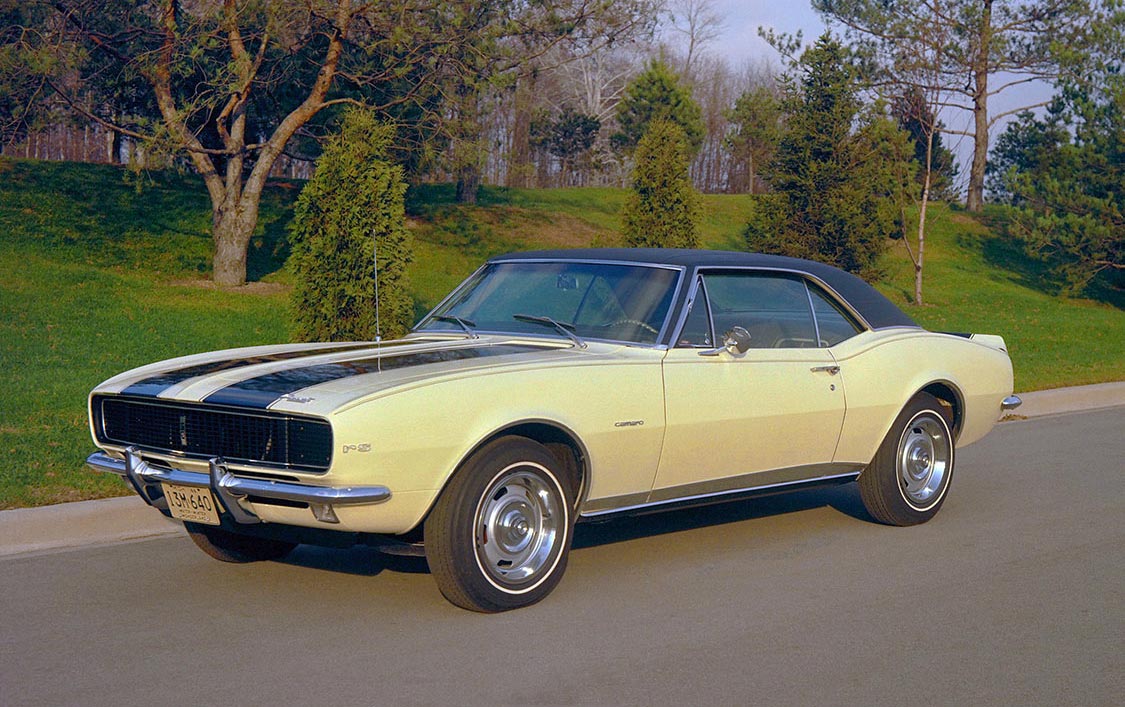
Five generations indicate a progression in American performance.
On June 21, 1966, two hundred automotive journalists were notified that an important Chevrolet news conference would be conducted on June 28th. Rumors circulated that Chevy was working on a counterpart to the immensely successful Ford Mustang.
Telephone connections were established in seventeen cities, and Chevrolet’s new pony car would be known as the Camaro. Chevrolet General Manager Pete Estes argued that the name implied companionship, much as a car should be to its owner. According to the narrative, two General Motors executives discovered the name in a book about French slang, which states that “Camaro” signifies friend or pal. In truth, the word is Camarade; Camaro is not a recognized French word. According to reports, a Chevrolet spokesperson described the Camaro as “a small vicious animal that eats Mustangs”.
The Camaro and its cousin, the Pontiac Firebird, were both debuted on September 12. The Camaro came in a bewildering number of trim levels, including RS, SS, and Z/28. The Z28 was the most powerful variant, boasting a 4.9-liter V8.
Sales in 1967 were low, with only 220,000 sold compared to 472,000 Mustangs. However, the difference would decrease, not because Camaro sales increased, but because Mustang sales fell; by 1969, 243,000 Camaros had been sold compared to 299,000 Mustangs.
Since its introduction in 1967, the Camaro’s engine output has ranged from 88 horsepower to 580 horsepower, as the pony car rode the highs of the muscle car era in the late 1960s and the lows of the oil embargo-influenced 1970s, to the emergence of modern technologies in the 1980s and the unprecedented power and efficiency available today.
“From the day it was introduced, the Camaro has been part of American culture and a reflection of the state of the American performance industry,” said Dean Guard, General Motors executive director worldwide gasoline engine engineering. Guard’s first automobile was a 1982 Camaro with a 5.0L V-8.
“What has never changed was the Camaro’s fun, attainable performance for a broad spectrum of customers, and the personal connection it inspired with generations of owners.”
In the 48 years since the Camaro’s introduction, engine families and supporting technologies have evolved dramatically, from carbureted inline-six base engines and brawny range-topping big-block V-8s in the early years to today’s sophisticated V-6 and V-8 engines that use advanced technologies to deliver a power-to-efficiency balance unimaginable in 1967.
The 2015 Camaro’s standard 3.6L V-6 engine produces 323 horsepower thanks to technologies such as direct injection and continuously variable valve timing. That’s more than any Camaro V-8 engine released between 1971 and 2000, and it can achieve up to 30 mpg on the highway.
As the Camaro enters the final year of its fifth generation, Chevrolet has created a historical overview of the engines that have contributed to its iconic standing among enthusiasts around the world.
Following the spike in Ford Mustang sales, Chevrolet executives realized that their mid-engine sporty model, the Corvair, might not be as popular as the Mustang. With this revelation, Chevrolet attempted to market the Camaro as having the same front engine, classic rear drive arrangement as the Chevy II Nova and Mustang. Furthermore, the automobile was designed to accommodate a diverse range of power plants in the engine room to please eager buyers.
The first Chevrolet prototype featured some of the lines that would appear on the final version, which would roll off the assembly line beginning in 1967, but you can also see other visual influences, notably European.
Prototypes are far more sculpture than vehicle, as engineers test air flow, posture, and production procedures.
You may observe that this version lacks door handles, doors, and a functioning hood.

